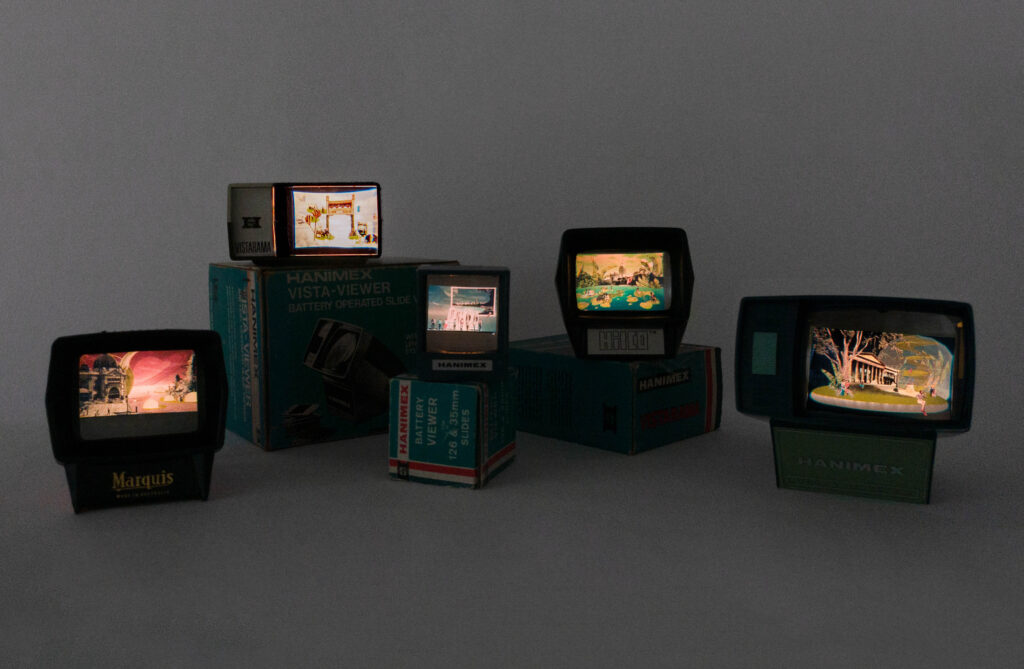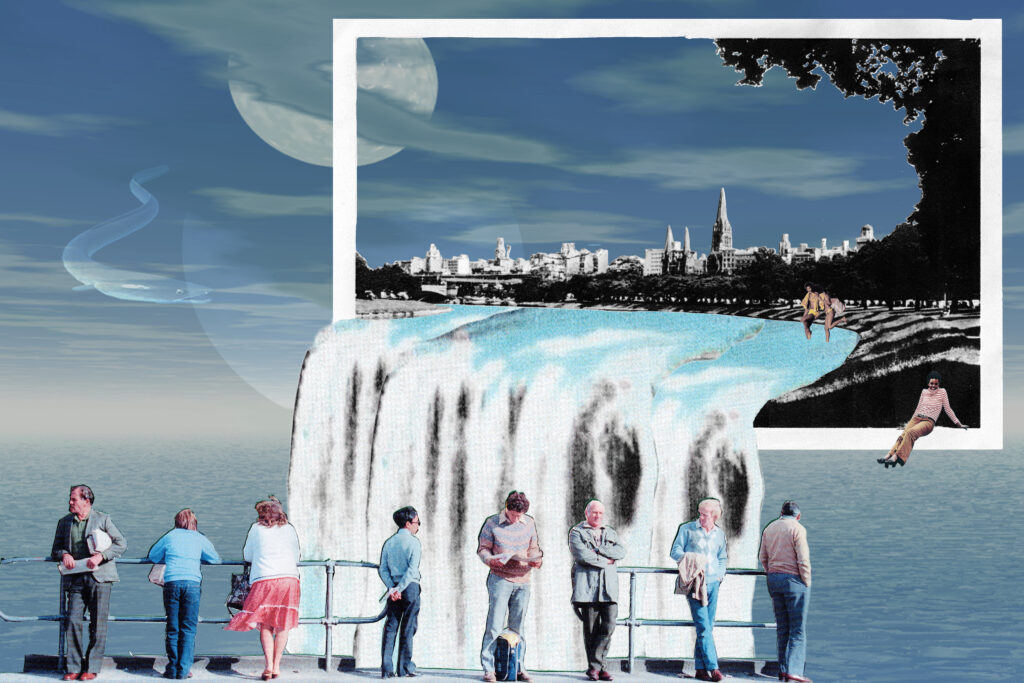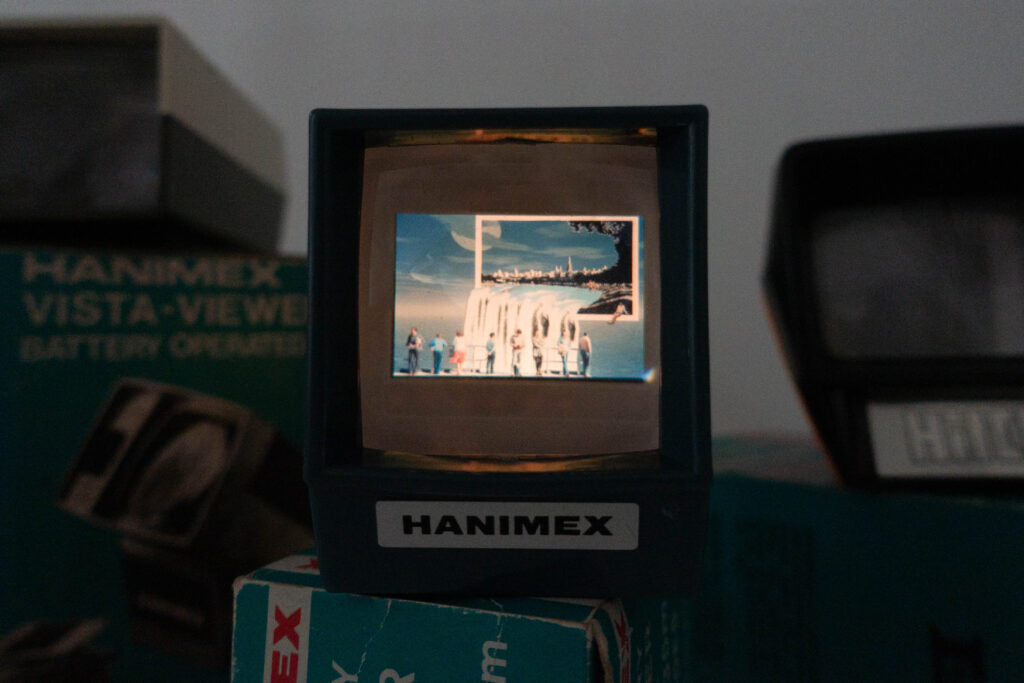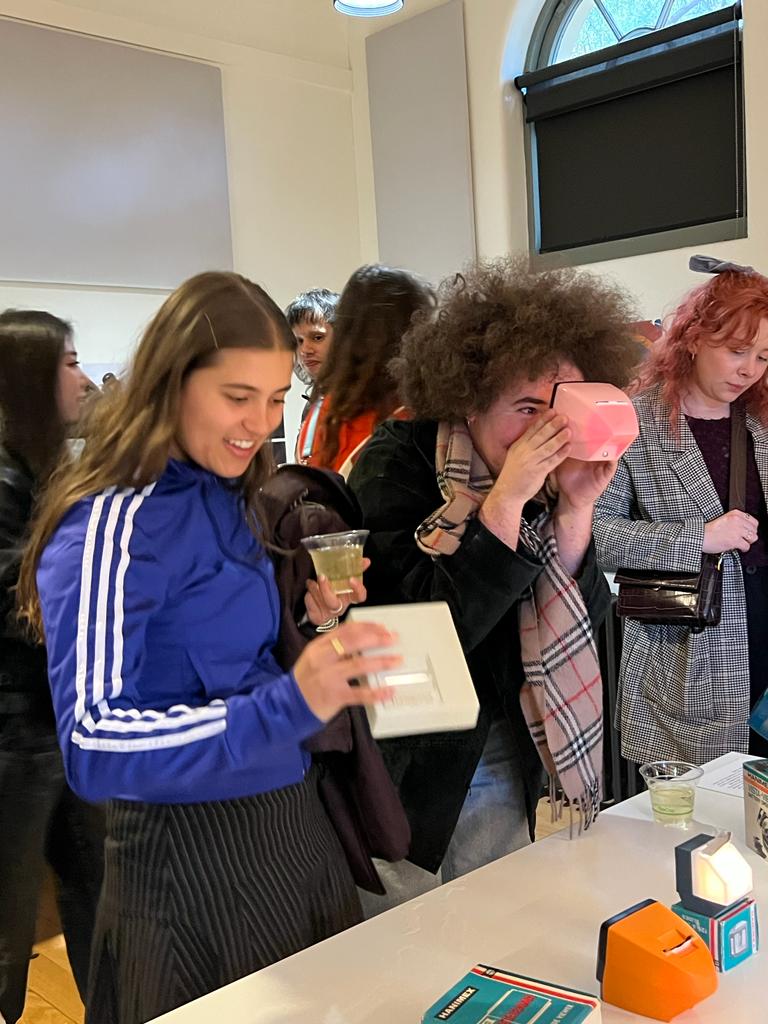Interview with Sian Tjia Hennessy, GradFoto Award 2023 Highly Commended Finalist

Ballarat Foto spoke with GradFoto Award 2023 highly commended finalist Sian Tjia Hennessy about their project New Memories of Past Futures.
Ballarat Foto: New Memories of Past Futures draws from science fiction and technological utopianism to speculate on the future of Naarm, presenting collages that reimagine familiar places around the city including the Birrarung, Chinatown and the State Library of Victoria. What interested you most about these concepts/genres and their potential to inform strategies for approaching your project? What points of reference were most compelling for you?
Sian Tjia Hennessy: My concept developed from my love of science fiction, particularly science fiction of the ’80s and ’90s. I’ve always found depictions of the future from the past particularly compelling because they’re often tied to the social context of the time in which they were made. However, with many science fiction predictions feeling closer to reality every day, I became interested in thinking about how we use the increasingly complex technology around us. Science fiction narratives often give the viewer/reader a warning about the potential dangers of technology, but what would happen if we explored using these technologies to create positive social change?
The references that were most influential on my work were VNS Matrix, the ’90s Australian cyberfeminist art collective, and Archigram, the ’60s avant-garde neofuturistic architectural group.

Ballarat Foto: Tell us more about what prompted your engagement with hopeful futures as an animating concept for your work? What appeals to you about it?
Sian Tjia Hennessy: In part, exploring hopeful futures was inspired by techno-utopianism and the early internet age. Examples of early digital art from the ’90s were often made by everyday people at home with open-source software which really captivated me. They contain a sense of promise for what the internet and technology could be to create a better world. Of course, the ideals of techno-utopianism and the digital elite (“digiterati”) were rightly critiqued at the time by many who warned that the advancement of technology would further perpetuate existing power structures, which I think can definitely be seen in our society today.
How are we supposed to work towards something that we can’t imagine?
On the other hand, exploring hopeful futures was inspired by my interest and background in activism, particularly in what we can learn from Indigenous activism movements. As a young person today, I think it’s very easy to feel despondent about the future of the world we live in. Even within activist movements, burnout and feelings of hopelessness can be prevalent. My sense of hope was revived last year after I did a subject at the Wilin Centre for Indigenous Arts and Cultural Development that inspired my thinking to move past just decolonising to actually indigenising the way we do things. I’m really interested in learning from the strength, resilience and hope of Indigenous peoples and Indigenous activism movements. There’s also this idea in society that modernising and embracing technology will always lead to a loss of culture, but I think there is so much potential for using technology to preserve and strengthen culture. As such, these scenes explore and imagine what could be if we embraced connections between culture, community, nature and technology in our society with the aim to inspire a spark of hope for our future—because how are we supposed to work towards something that we can’t imagine?

Ballarat Foto: The series engages with analogue and digital processes to produce both digital images and slides. What appeals to you about both kinds of technologies?
Sian Tjia Hennessy: For digital processes, there’s so much potential to create new and interesting visuals that can’t be achieved through analogue processes. The possibilities that can be created through parametric design and 3D rendering are incredibly interesting and complex. However, there’s something about analogue processes and technology that cannot be recreated digitally.
For example, to put my digital image files onto 35 mm positive transparency slide film I had to use a device called a film recorder. This was a stop-gap technology used in the ’90s when digital editing tools were useful but digital camera quality hadn’t caught up. People would take film photos, scan them, edit them digitally, and then use the film recorder to put them back onto film. It’s hard to see in the online gallery, but the amount of detail in the physical film slides in real life is incredible. Achieving that level of quality using modern digital printing methods would have been incredibly difficult or not possible. In general, analogue processes have a sense of warmth and humanness to them that’s really special.

For me, using analogue processes on this project also led to me creating connections with some really cool people I wouldn’t have otherwise met. As you can imagine, there aren’t many film recorders around these days and if you find one you still need an old Mac computer with the compatible operating system. I had almost given up hope on finding someone with one in Naarm, until I posted in a local photography Facebook group. Serendipitously, someone in that group had a working film recorder and the compatible computer set up. He’d bought it off someone years ago and had only used it a couple of times, and was waiting for someone who needed it. I’m incredibly grateful to him as the project wouldn’t have been able to happen in this form without him. I now consider him a friend of mine—we share similar creative interests and love to chat about our passion for old tech. It’s unlikely we would have ever met without me posting on Facebook, which is a really interesting example of digital technology connecting people through a love of analogue processes.
Ballarat Foto: How did encouraging spectators to engage with the slide viewers help you to highlight the aims of the project?
Sian Tjia Hennessy: Slide viewers were commonly used in the home throughout much of the 20th century, often to show travel photos. The displayed scenes thus aim to act as nostalgic mementos from another world—both a world that could’ve been and a world within reach. At my graduate exhibition, people would pick up the slide viewers to look into them and it was amazing to see their reactions. I think physically interacting with the slide viewers led people to more actively engage with the work.

Ballarat Foto: Do you have any advice for this year’s graduating students?
Sian Tjia Hennessy: Just apply! I applied on a whim, not expecting anything to come from it but I’m so glad I did—being selected as a highly commended finalist has really inspired me to take my practice further. Also, I think there’s a lot of pressure to have everything figured out after graduation but most people don’t. It’s okay to take your time to figure things out and what works best for you.

